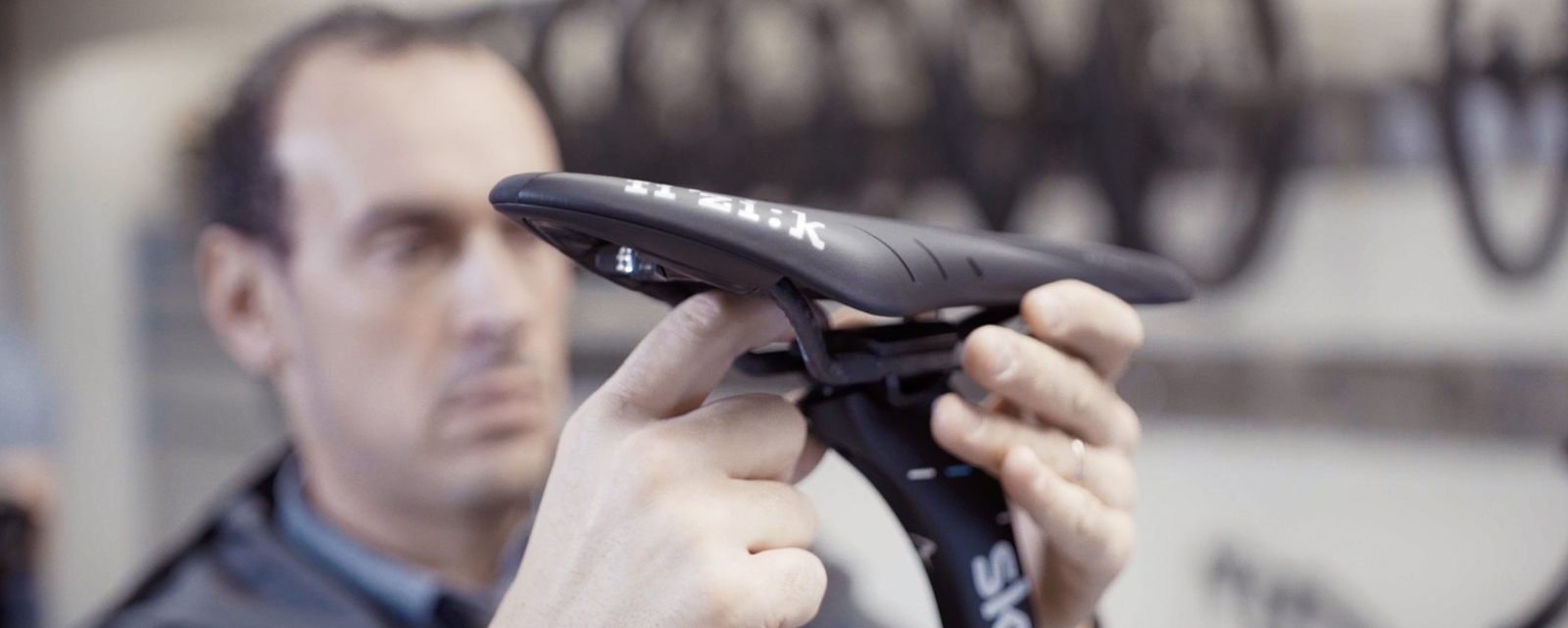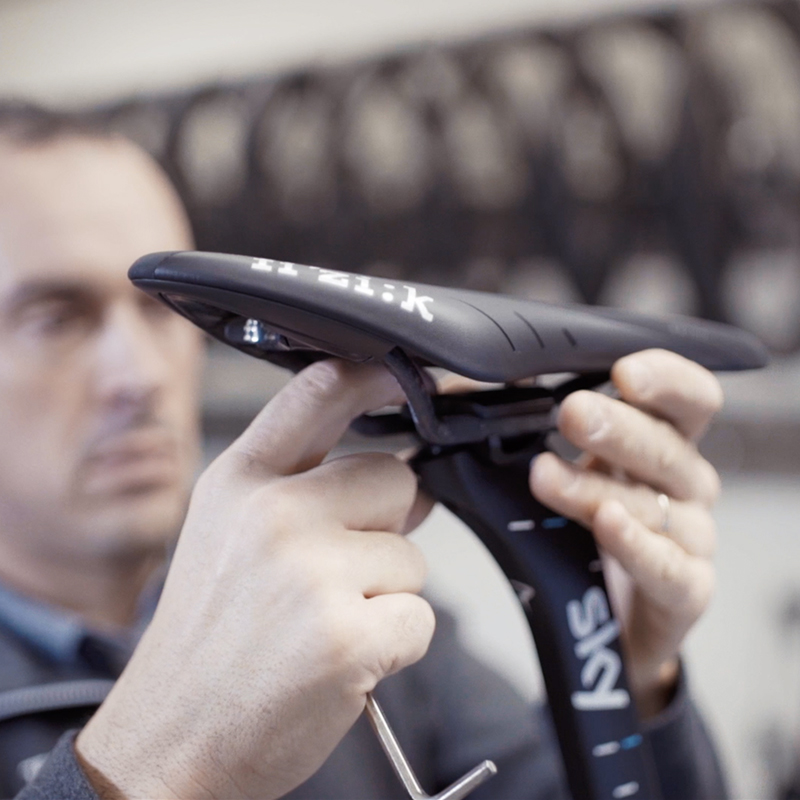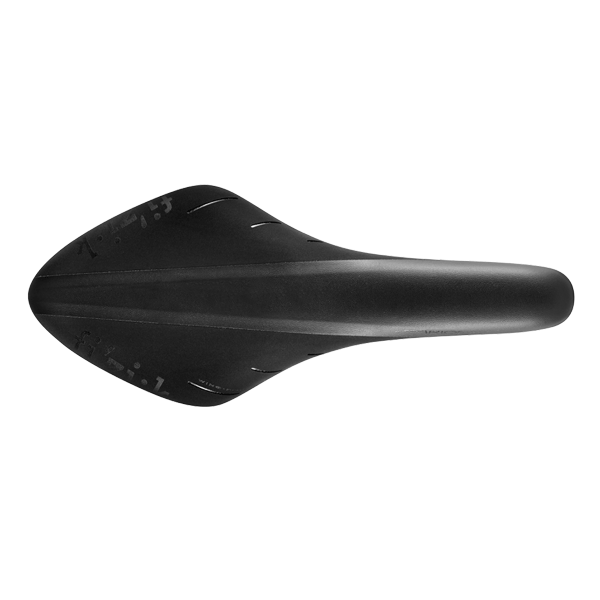When we’re cheering on our pro teams to success in the Classics, Grand Tours and other major races, it’s easy to overlook the precise detail that goes into setting up their bikes so the athletes can perform to the maximum.
Three important aspects of saddle set-up are: selecting the correct profile; measuring the rider’s bike position; and the art of setting up the bike with unerring accuracy every single day for every rider to replicate these vital metrics.
Gianni Moscon and Tour de France winner Geraint Thomas, for example, both suit the long, flat shape and narrow nose of the Arione. This year’s emerging talent, Egan Bernal, ride Antares, with its medium profile, as does Chris Froome; while it’s the waved profile Aliante for his ultra-reliable domestique Philip Deignan, who has just announced his retirement after 14 seasons as a pro.
With their, and their team-mates’ on-bike measurements recorded, we spent time with Team Sky’s mechanics who shared their vital part of the process.
Like all the team’s technical equipment, the measuring calipers they use are highly accurate professional tools, regularly checked – as are the riders’ measurements themselves.
Two sets of measurements that determine saddle height are taken for each rider: from the center of the bottom bracket to two points on the saddle. These positions vary from model to model because of their different profiles and are set to the fraction of a millimeter with the bike secure in a workstand.
The fore-aft measurements are the second set of positions for each rider, and these are also determined relative to the BB.
Advice that all good mechanics will gladly share – but you can imagine the potential consequences if these guys didn’t follow it themselves – is to use the correct torque settings on all bolts. They might make it all look easy, but of course, it’s a highly tuned professional operation that creates that effect!













